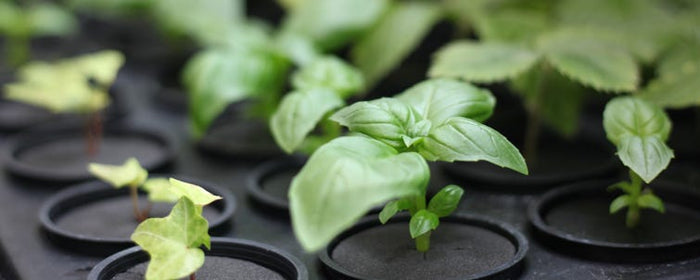![9 Ways to Fight the Freeze [Winter Health Check]](http://www.growell.co.uk/cdn/shop/articles/fight_the_freeze_blog_graphic.jpg?v=1731599292&width=1100)
9 Ways to Fight the Freeze [Winter Health Check]
Winter’s coming…
You know what that means - bad weather and cold conditions for your plants.
Here’s a 9 step health check that’ll really help you fight the freeze.
1. Monitor day & night temperatures
The best tool for this is an AirComfort Temperature & Humidity Meter.
Whatever tool you're using, make sure you position the probe in a suitable location, such as:
- at canopy level, not in direct light
Your target temperature should be between 24oC and 28oC (during the day/lights on) and 2-5oC lower (during the night/lights off), depending on what you’re growing.
2. Run lights when it's coldest
Grow lights produce heat.
To put this heat to good use, run your lights at night when temperatures drop outside.
3. Use a grow room heater

For a small area, a tubular heater is great. You can't beat Grow Gadgets Tube heaters! One customer claimed it costs them 1p a day to run.
To heat large areas quickly, a green house blow heater will quickly get rid of the cold; it’s cheap to run because it’s hardly on. You'll only need to run it for a few minutes every hour and you’re sorted.
4. Use indoor air for intake
Outside air is cold.
If you draw it into your grow room, you’ll have a harder time keeping plants warm.
Instead, try moving your intake fan so that you draw in air from indoors.
Doing this will also mean you’ll be drawing in CO2 rich, ‘lived in’ air. Bonus.
5. Seal off your grow room
Make your grow room draught proof.
Fill in any holes. Seal up any gaps. Check no air is seeping in through door and window frame spaces.
6. Keep pots off the floor
A cold floor can really slow down plants growing in pots. Make sure there’s an insulating barrier between your plants and the floor.
The easy answer is a Garland Tray, or even better, a RhizoStand.
7. Keep an eye on your nutrient

If your nutrient grows too cold, it can shock plants, ideally, your grow room temperature should be between 18oC and 20oC.
Careful not to warm your solution too much, though – the warmer the solution, the lower the dissolved oxygen content. If plants don’t have enough oxygen in the root zone, they’ll be far more susceptible to diseases.
Want to measure the nutrient temperature accurately? Use the Aqua Master P110 Pro Combo Pen
8. Store nutrients & boosters properly
Poor storage can damage your nutrients.
If they get too cold, some of the dissolved salts that make up your nutrients will crystallise (they become solids); in this form, they are no longer part of the nutrient solution and are unavailable to your plants.
To prevent this, store your nutrients in a cool, dark place, out of direct sunlight, where temperatures sit between 10oC and 19oC.
9. Consider a closed-loop room

Consider a closed loop room for maximum control over your environment, not only during the winter, but over summer too.





